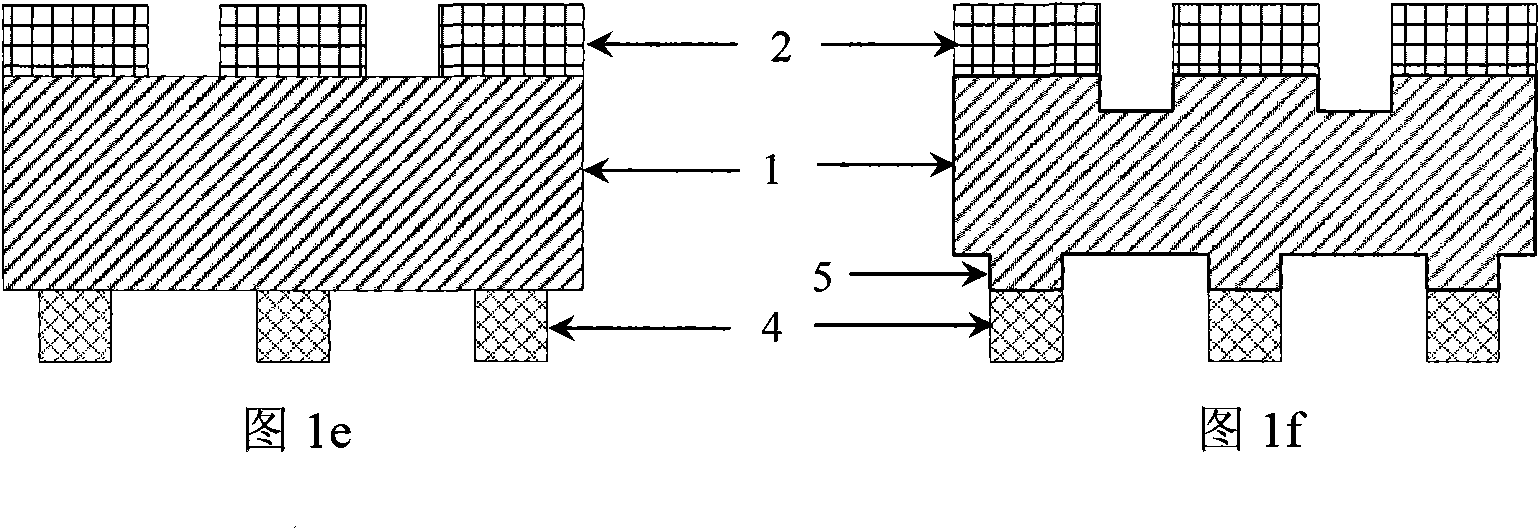Method for preparing off-plane hollow microneedle array for use in transdermal medicament administration
A technology of microneedle array and hollow micro, which is applied in the direction of microneedles, medical devices, needles, etc., can solve the problems of poor bonding strength between the needle body and the substrate, high cost, and difficult process, so as to improve reliability and insertion characteristics, increase the production height, and simplify the process flow
- Summary
- Abstract
- Description
- Claims
- Application Information
AI Technical Summary
Problems solved by technology
Method used
Image
Examples
Embodiment Construction
[0025] Below in conjunction with the accompanying drawings, the present invention is further described in detail through the embodiments, but the scope of the present invention is not limited in any way.
[0026] Through mechanical processing of chemically pure titanium materials, four-inch titanium-based wafers are prepared by wire cutting. Low-temperature vacuum annealing and chemical-mechanical polishing were performed to obtain a 500 μm thick four-inch double-sided polished titanium-based wafer. Take a piece of the titanium substrate to prepare an off-plane hollow microneedle array according to the following steps:
[0027] 1. Growth mask
[0028] The titanium substrate 1 was ultrasonically cleaned with acetone / alcohol for 10 minutes. After that, sputter a layer of 500nm thick nickel mask 2 successively on the polished surface of one side of the substrate (you can also sputter a layer of 20nm thick titanium on the surface of the substrate as an adhesion layer to increase...
PUM
| Property | Measurement | Unit |
|---|---|---|
| thickness | aaaaa | aaaaa |
Abstract
Description
Claims
Application Information
 Login to View More
Login to View More - R&D
- Intellectual Property
- Life Sciences
- Materials
- Tech Scout
- Unparalleled Data Quality
- Higher Quality Content
- 60% Fewer Hallucinations
Browse by: Latest US Patents, China's latest patents, Technical Efficacy Thesaurus, Application Domain, Technology Topic, Popular Technical Reports.
© 2025 PatSnap. All rights reserved.Legal|Privacy policy|Modern Slavery Act Transparency Statement|Sitemap|About US| Contact US: help@patsnap.com



